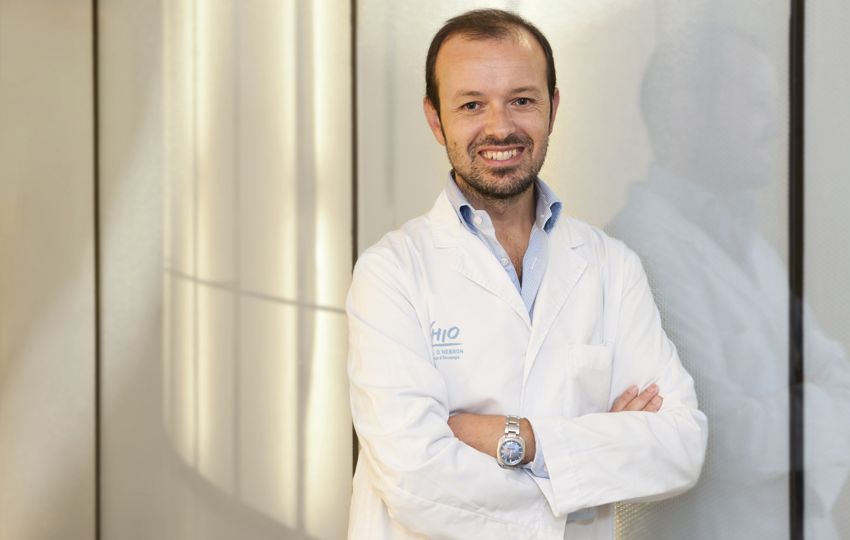
- Published in Science this week, VHIO has participated in pioneering study analyzing bacterium persistence and antibiotic response in colorectal cancer
- Findings reveal the invasion of Fusobacterium nucleatum and its microbiome in colorectal cancer coupled with liver metastasis and cancer growth in patient-derived colon cancer xenograft models (PDX)
- Treatment with antibiotics in experimental models shows reduction in bacterium load, cancer cell proliferation and overall tumor growth
Recent studies have demonstrated that disruption to the makeup of microbiota can significantly elevate the risk of cancer types, especially colorectal cancer (CRC), and its implication in the modulation of inflammation, tumor growth and metastasis is also becoming increasingly evident.
Advancements in microbial detection technologies have resulted in the discovery of several previously overlooked microorganisms that assume important roles in human diseases, including cancer. One such emerging pathogen is Fusobacterium nucleatum – the most prevalent and highly enriched bacterial species in colorectal cancer. High levels of Fusobacterium in tumors correlates with less T-cell infiltration, advanced disease, poorer overall survival, and clinical characteristics including right side anatomical localization, mutations of the BRAF gene and microsatellite instability.
Published in Science yesterday online ahead of print as a Report* article, VHIO researchers have participated in a study led by first author Susan Bullman and corresponding author Matthew Meyerson from the Dana-Farber Cancer Center, Boston (MA, USA). Findings evidence that the colonization of human CRC with Fusobacterium and its associated microbiome is found in primary tumors and persists in liver metastases. These results support the hypothesis that Fusobacterium travels with the primary cancer cells to distant sites as part of metastatic tissue colonization.
The study also reveals that Fusobacterium survives through multiple generation of xenografts (PDXs) and that treating mice bearing Fusobacterium-positive PDXs with metronidazole – specially selected for fusobacteria´s reported sensitivity to this antibiotic, significantly decreases tumor growth. These results also open potential new avenues in manipulating the microbiome for the treatment of these tumors.
“These observations suggest that this bacterium is more than a mere bystander or passenger of tumorigenesis, and not just a consequence of a favorable tumor microenvironment. It could in fact be a driver of metastases. Selective antimicrobial therapy could therefore represent important weaponry for the treatment of patients with Fusobacterium-associated colorectal cancer,” explains Paolo Nuciforo, Principal Investigator of Molecular Oncology at VHIO and co-author of the study. To decipher its role as a potential cancer driver, the researchers used five independent cohorts of patient-derived colorectal cancer cancers for Fusobacterium and microbiome RNA and/ or DNA. Where technically possible, the team also performed cultures.
Fusobacterium can exist non-invasively as part of bacteria biofilm present in colorectal lumen, and invasively within the tumor spanning tumor cells, the tumor microenvironment and monocytes. To establish the exact localization/spatial distribution of Fusobacterium in human primary CRC tumors and liver metastases, which could not be extrapolated using the qPCR data, VHIO´s team, headed by Paolo Nuciforo, developed an in situ hybridization assay to pinpoint mRNA molecules of the bacterium in primary tumors and liver metastases.
VHIO investigators, in close collaboration with the Medical Oncology and Pathology Departments of the Vall d´Hebron University Hospital (HUVH – located within the Vall d´Hebron Barcelona Hospital Campus), directed by Josep Tabernero and Santiago Ramon y Cajal respectively, provided the majority of samples necessary to compare primary tumors and paired liver metastases in patients, as well as monitor and track tumor recurrence. “It is thanks to this VHIO-HUVH collaboration that Paolo and colleagues have succeeded, for the very first time, in establishing the presence and persistence of Fusobacterium in metastatic tumor cells in liver tissue,” observes Santiago Ramon y Cajal.
Combining the expertise of five US-based centers of excellence along with VHIO, the study partners treated the mice bearing Fusobacterium-positive PDXs with metronidazole, a Fusobacterium-killing antibiotic. Results showed that oral administration of metronidazole decreased bacterium load, leading to reduced cancer cell proliferation, and reduced tumor growth, thus suggesting the validity of manipulating the microbial community for the treatment of Fusobacterium-associated CRC. “Determining the localization of Fusobacterium within tissue samples may translate in a novel diagnostic approach. Establishing the invasive capabilities of this bacterium could be crucial in more precisely identifying those patients who would be most likely to benefit from antibiotic treatments,” adds Paolo.
“The results support a causative role of Fusobacterium in colorectal cancer and provide a strong foundation for further pursuing targeted approaches directed against this bacterium and other key components of the cancer microbiome,” concludes Josep Tabernero, Director of VHIO and co-author of the study.
###
*Analysis of Fusobacterium persistence and antibiotic response in colorectal cancer. Susan Bullman, Chandra S. Pedamallu, Ewa Sicinska, Thomas E. Clancy, Xiaoyang Zhang, Diana Cai, Donna Neuberg, Katherine Huang, Fatima Guevara, Timothy Nelson, Otari Chipashvili, Timothy Hagan, Mark Walker, Aruna Ramachandran, Begoña Diosdado, Garazi Serna, Nuria Mulet, Stefania Landolfi, Santiago Ramon y Cajal, Roberta Fasani, Andrew J. Aguirre, Kimmie Ng, Elena Élez, Shuji Ogino, Josep Tabernero, Charles S. Fuchs, William C. Hahn, Paolo Nuciforo, Matthew Meyerson. Science 23 Nov 2017: eaal5240. DOI: 10.1126/science.aal5240.
AAAS Science Press Package Team selected the study for its media outreach program.
Coverage of the paper in The New York Times: Why Is This Bacterium Hiding in Human Tumors?








